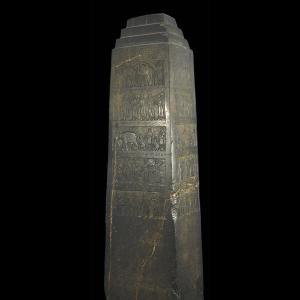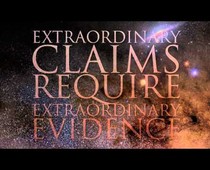 by Jason Dulle
by Jason Dulle
Christians are often accused of being judgmental by non-Christians—and sometimes, even by fellow-Christians. Indeed, it’s not uncommon to even hear non-Christians quote Jesus’ words in Matthew 7:1 against Christians: “Judge not, lest you be judged.” (even if they’ve never read a page from the Bible in their life!) I am persuaded that both the church and the culture at large have failed to understand the Biblical teaching on judgmentalism. Before I explain, let’s look at a few more Biblical passages often cited in support of non-judgmentalism:
1 Cor 4:3-5 But with me it is a very small thing that I should be judged by you or by any human court. In fact, I do not even judge myself. 4 For I am not aware of anything against myself, but I am not thereby acquitted. It is the Lord who judges me. 5 Therefore do not pronounce judgment before the time, before the Lord comes, who will bring to light the things now hidden in darkness and will disclose the purposes of the heart. Then each one will receive his commendation from God. (ESV)
1 Cor 5:12-13 For what have I to do with judging outsiders? Is it not those inside the church whom you are to judge? 13 God judges those outside. “Purge the evil person from among you.” (ESV) [talking about executing punishment]
James 4:11-12 Do not speak evil against one another, brothers. The one who speaks against a brother or judges his brother, speaks evil against the law and judges the law. But if you judge the law, you are not a doer of the law but a judge. 12 There is only one lawgiver and judge, he who is able to save and to destroy. But who are you to judge your neighbor? (ESV)
Most people understand judgmentalism to refer to anyone who tells another person that what s/he is doing is wrong; i.e. an expression of moral disapproval. There are two reasons we can be confident that this is not the meaning of these passages. First, it is a contradiction to tell a person they are wrong for telling other people they are wrong. Secondly, Jesus, Paul, Peter, James, and other Biblical writers often expressed their moral disapproval of a host of behaviors and attitudes. Indeed, in one of the verses just quoted (1 Corinthians 5:13) Paul instructed the church to exercise judgment against the erring brother! So what does the Bible mean when it says “judge not?” The Biblical notion of judgmentalism refers to “an inappropriate sense of moral superiority over another because of that person’s moral failures,”[1] and/or a premature/inappropriate pronouncement regarding someone’s eternal destiny.
While people like to focus on Jesus’ statement in Matthew 7:1 not to judge, they fail to read on further in the chapter where Jesus called certain individuals “pigs,” “dogs” (7:6) and “wolves in sheep’s clothing” (7:15)! John records Jesus as commanding us to make judgments: “Stop judging by mere appearances, and make a right judgment” (John 7:24). What Jesus was opposed to was not making moral distinctions between right and wrong or calling a spade a spade, but rather a critical and judgmental spirit stemming from a sense of moral superiority.
In Matthew 7:3-5 Jesus said, “Why do you see the speck in your brother’s eye, but fail to see the beam of wood in your own? 4 Or how can you say to your brother, ‘Let me remove the speck from your eye,’ while there is a beam in your own? 5 You hypocrite! First remove the beam from your own eye, and then you can see clearly to remove the speck from your brother’s eye.” (NET) Here Jesus warned against heaping criticism and condemnation on others without first examining our own behavior (hypocritical judgment). He was speaking in particular of religious leaders who harshly condemn others for moral failures while justifying their own. Jesus didn’t have a problem with someone pointing out the speck in his brother’s eye, but He wanted it to be done in the proper order: first take care of your own moral shortcomings, and then you can proceed on to pointing out the shortcomings of others. That’s why Jesus said “First remove the beam from your own eye, and then you can see clearly to remove the speck from your brother’s eye.” This is not a call for non-judgmentalism, but rather for a proper ordering of judgment: judging ourselves before judging others (self-examination before others-examination). Jesus requires that we make moral judgments, but we must convey those moral judgments in love, and only after we have examined ourselves to make sure we are not passing judgment hypocritically.
Paul’s teaching is in line with Jesus’. Paul asked the Corinthians, “For what have I to do with judging outsiders? Is it not those inside the church whom you are to judge?” (1 Corinthians 5:12) According to Paul it is the duty of Christians to judge the behavior of fellow-Christians. Earlier in the same chapter Paul demanded that man who was having a sexual relationship with his step-mother be “turn[ed]…over to Satan for the destruction of the flesh, so that his spirit may be saved in the day of the Lord,” (1 Corinthians 5:5) even declaring that he had judged him (1 Corinthians 5:3). Not only did Paul express his moral disapproval of this man’s actions in no uncertain terms, but he even prescribed that he be punished for his wrongdoing.
Judgmentalism is wrong, but moral judgments themselves are inescapable, morally justified, necessary, and integral to the Christian worldview. So the next time you are accused of violating the Biblical command to “judge not” for making and expressing moral distinctions, set the record straight regarding the Bible’s teaching.
 Sometime around 1979 an ivory pomegranate no bigger than a human thumb and dated to the 8thcentury BC showed up on the antiquities market. Around the top it contains an inscription which reads, “[Belonging] to the House of [Yahwe]h, consecrated to the priests.” Some scholars think this pomegranate adorned the head of a priestly scepter from Solomon’s temple.
Sometime around 1979 an ivory pomegranate no bigger than a human thumb and dated to the 8thcentury BC showed up on the antiquities market. Around the top it contains an inscription which reads, “[Belonging] to the House of [Yahwe]h, consecrated to the priests.” Some scholars think this pomegranate adorned the head of a priestly scepter from Solomon’s temple. [1]See “Leading Israeli Scientist Declares Pomegranate Inscription Authentic” at http://www.bib-arch.org/news/news-ivory-pomegranate.asp for details.
[1]See “Leading Israeli Scientist Declares Pomegranate Inscription Authentic” at http://www.bib-arch.org/news/news-ivory-pomegranate.asp for details.


















